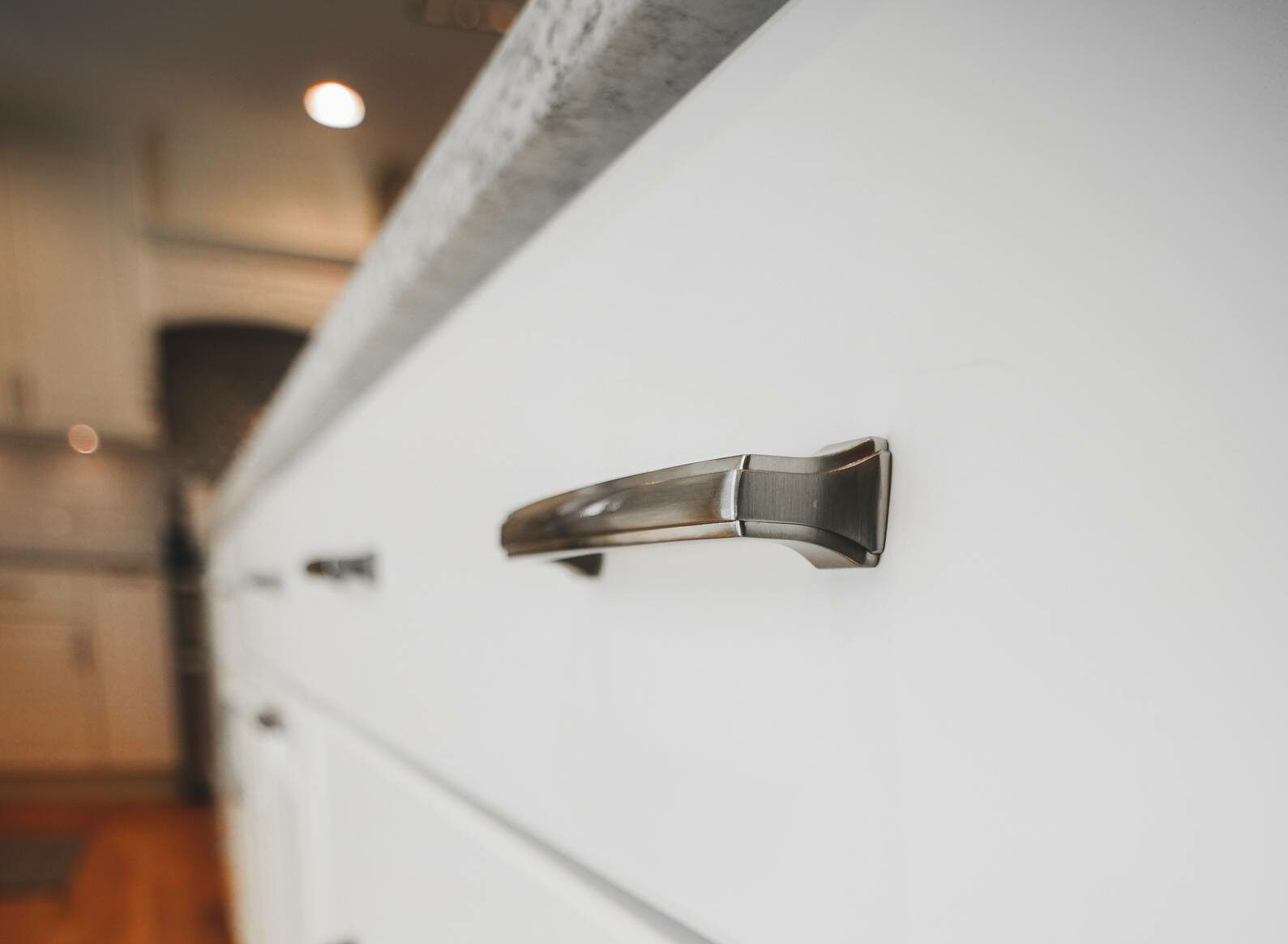Does Humidity Affect Hardwood Cabinets?
January 17th, 2024 | 3 min read

Understanding How Humidity Affects Your Hardwood Cabinets
Normally, wood and moisture do not go well together but actually, there is always moisture in wood. Wood has the ability to withstand and store water in order to maintain a certain level of equilibrium, so technically they work well together. The relationship between humidity and cabinets is important because it helps determine whether a cabinet door will wrap or crack, which can be a hassle to repair.
How Does Moisture/Humidity Affect Wood?
All wood types are hygroscopic. Hygroscopic is just a fancy word for the absorption and release of moisture depending on the humidity of the surrounding air. The higher the humidity, the higher the moisture content. Varying humidity levels cause wood to expand and contract and this is where homeowners experience bending and cracking in their wood cabinets.
Equilibrium Moisture Content:
When wood shrinks and expends according to its environment until it reaches a “middle ground” is called the equilibrium moisture content. In a controlled humidity environment, wood does not take long to reach EMC. However, for newly installed wood, like cabinets, it may take longer because the wood is settling into its new environment. If the moisture content or humidity is low, wood will expand, making it buckle or distort the material around it. When the moisture content is high, wood will shrink, and run the risk of large gaps or cracks forming in the wood itself. When the wood moisture content and the local climate is closely matched, damage is less likely to happen.
Humidity and Cabinet Doors:
Most homes in North America struggle with humidity control. Many times, homeowners buy de-humidifiers to help regulate their home moisture level. A typical relative humidity level inside of a North American home is between 25% and 65%, that’s a huge range. This large humidity range can cause up to a 6% change in moisture content in wood, which is equivalent to a quarter inch change in a wood board.
Cabinet doors normally do not have a problem with fluctuating humidity levels, just the wood materials behind the doors. However, in some circumstances, cabinet doors that have acclimated to a humidity level above 70% and that humidity level decreases rapidly, those cabinet door finishes may start to peel, or the grain may start to split. Climates where humidity levels can change rapidly are typically seen in environments where the weather changes seasonally.
Maintaining a stable humidity level in your home is important. Heating systems can dry out your home, causing wood to contract. Some steps to take to maintain the relative humidity of your home would be to keep your home’s interior temperature between 60 and 75 degrees Fahrenheit or purchase a dehumidifier. When a relative humidity is established, the moisture content in wood shouldn’t change more than 2% and for interior areas the average moisture content level ranges between 8% to 14%.

How To Measure Wood Moisture Content:
There are two more common ways to measure the moisture content of wood, oven-dry testing, and a moisture meter. Oven-dry testing is the more time consuming out of the two options and isn’t as widely used compared to using a moisture meter. Using the oven-dry testing method, you will need a piece of sample wood that is the same as your cabinets, stain/paint, and all. You will also need a special oven or kiln, which most homeowners do not have.
On the other hand, a simpler and easier way to measure wood moisture content is using a moisture meter. There are two different moisture meters, one with pins and one without pins. Pin-type meters measure wood’s moisture content by using electrical resistance through penetrating electrodes. How dry the wood is, is determined by the amount of resistance there is to an electrical current because water is a great conductor of electricity.
Pinless meters use electromagnetic sensors that scan wood to measure the moisture content but does not penetrate the wood or leave any marks. Pinless meters scan the surface of the wood and cover a larger area than meters with pins. Since these meters do not damage the wood, you are testing, they are the preferred measuring tool and are easily accessible at your local hardware store.
Average Humidity Levels Around Columbus, Ohio:
Different geographical locations have different average humidity levels. More dry climates like in the desert, have a relative humidity between 30% and 45%. In areas where temperatures fluctuate regularly, like Columbus, Ohio, the relative humidity is much higher. The average humidity in Columbus, Ohio is about 70% and major cities around Columbus are about the same. Average humidity levels of cities close to Columbus, Ohio are as follows:
Indianapolis, Indiana: 72%
Pittsburg, Pennsylvania: 68%
Chicago, Illinois: 71%
Louisville, Kentucky: 66%
Taking the time to research the average humidity where you live, and the moisture content of your home will help you preserve your kitchen cabinets’ health. Being able to avoid any major bending, cracking, or peeling in your kitchen cabinets saves you money in the long run. Investing in a company that provides quality cabinets will also help ensure longevity because the higher quality of wood, the less likely of any malfunction to occur. Learn more from the pros at JSB Home Solutions!
JSB Home Solutions was founded by my dad. Growing up around the family business means that I've been living and breathing home remodeling for quite literally my entire life. When I'm not at work, you can find me homeschooling my three kids, in the garden, or cheering my kids on at wrestling tournaments.
Topics:
.png?width=1037&height=397&name=JSB%20Logo%20with%20Services%20(1).png)
.png?width=1047&height=396&name=JSB%20Logo%20with%20Services%20(2).png)